History
This History of Alpha Gamma Rho-Alpha Alpha, WVU
Compiled by Bro. Neil R. Thorne, with the assistance of Bro. William “Stitch” Wilson, Bro. Tom Monahan, and Bro. Andy Yost
The A.G.R. Club (2/22 to 4/3/1924)
The concept for the A.G.R. Club first started in 1921 with the intention of forming a club to petition the National AGR Fraternity for a WVU Charter. This was done by a group of Agricultural students under the direction of Prof. J.H. Longwell (AGR Theta Chapter) of the WVU Animal Husbandry Department. They held their first organizational meeting in Oglebay Hall in February of 1922. At this first meeting they drafted a constitution and elected officers. Mr. Dudley Alleman (AGR Zeta Chapter), Editor of the Sickle & Sheaf, was in attendance to help them organize and draft a petition for acceptance as a Fraternity with the WVU authorities. J.D. Cather was the first president of the A.G.R. Club. The first Constitution restricted The A.G.R. Club to agriculture majors whom had successfully completed a minimum of 14 hours of course work. The Club procured an unfurnished rental house at 792 Wiley Street in the Summer of 1922. The 1922 AGR National Convention in Madison, Wisconsin, did grant them a charter, but because of the club’s and AGR fraternities’ constitutional restrictions, the WVU authorities refused to allow them to be a campus fraternity, and relegated them to remain at a club status. The University was afraid that the membership restrictions would have a narrowing influence. The A.G.R. Club submitted a 2nd petition with recommendations of all college deans where AGR Fraternities were present, and again the WVU authorities refused. The Club considered petitioning other fraternities, but decided that it would be AGR or nothing. The 3rd petition to become a fraternity was put together with the assistance of Dr. G.R. Lyman, Dean of the WVU College of Agriculture, and it was finally accepted by the WVU authorities.
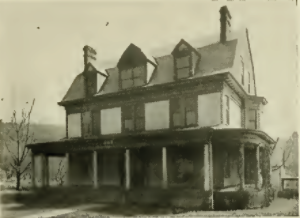
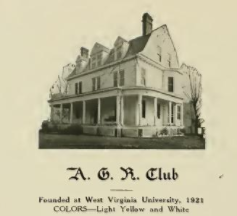
ALPHA ALPHA CHAPTER INSTALLED AT WVU (4/4/1924 at 8:00p.m.)
On April 4th, 1924, Alpha Gamma Rho, Alpha Alpha Chapter, became a reality. A ceremony was held at 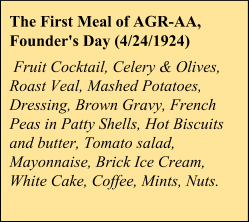 the chapter house on Willey Street to install 38 charter members followed by a banquet at the Ortolan Hotel at 8:00pm that evening. H.E. Allanson, the AGR Grand VP and Frank J. Hopkins (Zeta Chapter) installed the charter Alpha Alpha members. Arthur G. Snyder had the honor of being AGR-AA #1. Followed by Arthur Core #2. The toastmaster of the ceremonies was Prof. E.A. Livesay of the Animal Husbandry Department, honorary member and supporter of AGR.
the chapter house on Willey Street to install 38 charter members followed by a banquet at the Ortolan Hotel at 8:00pm that evening. H.E. Allanson, the AGR Grand VP and Frank J. Hopkins (Zeta Chapter) installed the charter Alpha Alpha members. Arthur G. Snyder had the honor of being AGR-AA #1. Followed by Arthur Core #2. The toastmaster of the ceremonies was Prof. E.A. Livesay of the Animal Husbandry Department, honorary member and supporter of AGR.
AGR-AA grew quickly on campus and it wasn’t long before they needed a new house. They needed a house that made their presence among the fraternities known. They moved to another rental house located on fraternity row; which at the time was on University Avenue in Sunnyside. This house was located at 2028 University Avenue and was occupied by AGR-AA from 1927 to 1933. The AA’s were always near the top in scholastic achievement and intra-fraternity competition, particularly wrestling. Between the period of 1924 to 1933, 157 members were added to Alpha Alpha for an average of 26 per year.
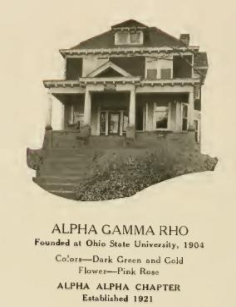
Edward Alexander Livesay
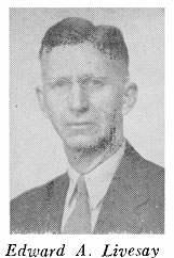 Though never more than an Honorary member of Alpha Gamma Rho, he was probably one of the most important people in both the implementation and reinstatement of Alpha Gamma Rho, Alpha Alpha Chapter. Born in Frankford, WV, on October 22nd, 1889, he received his primary and secondary education in the Greenbrier County school system. Following his B.S. in Civil Engineering at VPI in 1912, he worked for a New York engineering firm for 2 years. In 1914, Dr. Livesay returned to VPI as a graduate student to complete work on a Master’s degree in zoology.
Though never more than an Honorary member of Alpha Gamma Rho, he was probably one of the most important people in both the implementation and reinstatement of Alpha Gamma Rho, Alpha Alpha Chapter. Born in Frankford, WV, on October 22nd, 1889, he received his primary and secondary education in the Greenbrier County school system. Following his B.S. in Civil Engineering at VPI in 1912, he worked for a New York engineering firm for 2 years. In 1914, Dr. Livesay returned to VPI as a graduate student to complete work on a Master’s degree in zoology.
In 1917, Livesay went to the University of Missouri in the dual role of graduate student and Assistant County Agent. Two years later, after receiving a M.A. in zoology from Missouri, he returned to West Virginia University to found and become head of the Animal Husbandry Department. It was around this time that he would have known Prof. J.H. Longwell, also of the Animal Husbandry Department. Prof. Longwell was a Missouri and AGR Alumni of the Theta Chapter. Prof. Longwell was present in an advisory role for the first meeting of the A.G.R. Club.
The influence of these two professors was the driving force for the establishment of the Alpha Alpha Chapter. Dr. Livesay was present as an honorary member of AGR and toastmaster of the first AA chartering banquet. Dr. Livesay was also the driving force for the re-charter of AGR in 1949, as well as toastmaster for the re-charter banquet.
Dr. Livesay devoted a lifetime to the improvement of West Virginia Agriculture. He was responsible for turning the badly eroded, brush covered, county poor-farm into the green rolling hills and buildings of the present WVU Animal Husbandry Farm. Dr. Livesay taught 34 years of Animal Breeding and Beef Production at WVU, and at one time or another taught every course in the combined Animal and Poultry Husbandry Department. He also helped in founding the WVU Block and Bridle Club.
DARK TIMES AND WAR (1/33 to 2/16/48)
The Chapter was doing extremely well until the fall of 1929 and the start of the great depression. Though by 1933 very few students could afford to stay in school and in January the Chapter had to close its’ doors. The reason for this closure was in absolutely no fault of the Chapter, but merely a result of the harsh economic times. As the economy and enrollment started to improve by the late 1930s and there was talk of the need to reactivate the Chapter by local supporters and Chapter Alumni. That hope ended at the start of World War II when enrollment dropped again. Most of the Chapter records from the period (1921 to 1948) have been lost, but there are still IFC and Monticola records in the WVU archives.
GAMMA RHO CLUB (2/17/1948 to 3/25/49)
With the end of World War II and returning GIs, the student body at WVU grew. To say it grew is a bit of an understatement, the student population went from around 2,000 to 7,000 students. In 1947 L.B. Allen (Omicron Chapter) discussed reactivation with a few AA Alumni. On 10/22/1947, 15 Alumni met at 205 Oglebay Hall to further discuss reactivation. Prof. E.A. Livesay (who was one of the original AGR proponents and toastmaster of the first AA Charter banquet) was made chairman of the Alumni Committee to reactivate Alpha Alpha. The actions of this committee brought together 23 students and 17 alumni at a dinner at “The Oaks” at Cheat Lake on February 14th, 1948. Dr. J Holmes Martin (Omicron Chapter) and Chairman of the National AGR Extension Committee spoke on requirements for reactivation. Three days later on February 17th, 1948, 25 students formed the Gamma Rho Club to fulfill the future requirements of reactivating the AA Chapter. A constitution was drafted and officers were elected. A regular meeting schedule was established. The first Noble Ruler of the Gamma Rho Club was Raymond Zinn #158 (also the first member to be inducted at the AA reactivation). On March 4th, 1948, the area alumni formed the Mountaineer Alumni Association of Alpha Gamma Rho. A banquet was held for prospect members, club members, and AA Alumni on April 26th 1948. Newsletters were published to keep the Alumni informed of the Club’s activities and plans. By the end of the 1948 Fall Semester, the Club had reached 38 members. On August 17th 1948, the Club petitioned the University to operate as a local fraternity and permission was granted. The Club members searched to find a house. They found a rental house at 206 Grant Avenue which they would later purchase, being the first house to that point AGR-AA would own. The house was rented on September 16th, 1948, furnished and painted by the members, and Mrs. C.E. Wilkinson agreed to be their weekend house mother and head chaperone. A meal plan was established that furnished three meals a day, six days per week, with lunch and dinner on Sundays.
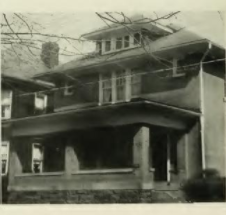
ALPHA ALPHA REACTIVATION (3/26/1949 to Present)
At 1:00pm on March 26th 1949, Alpha Alpha came back to life. The initiation ceremony ran from 1:00pm to 5:20pm at the Marilla Recreation Center in Morgantown. The initiation team consisted of the following National AGRs:
Earl Butz – Grand President AGR
Maynard Coe – AGRPast Grand President
Holmes Martin – AGR Past Grand President
A.B. Hamilton – AGR Historian
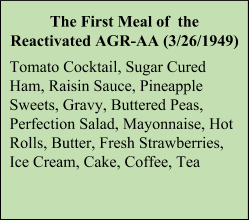 Beta, Gamma and Alpha Theta Chapter actives, along with Alpha Alpha alumni were also present to assist with the initiation and reactivation. Raymond Zinn #158 was the first of 51 members to be initiated into the reactivated chapter (#158 to #208). A reactivation banquet was sponsored by the Alpha Alpha alumni at the Hotel Morgan at 7:00pm that evening in the Marine Room. The toastmaster was none other than Prof. E.A. Livesay, head of the Animal Husbandry Department.
Beta, Gamma and Alpha Theta Chapter actives, along with Alpha Alpha alumni were also present to assist with the initiation and reactivation. Raymond Zinn #158 was the first of 51 members to be initiated into the reactivated chapter (#158 to #208). A reactivation banquet was sponsored by the Alpha Alpha alumni at the Hotel Morgan at 7:00pm that evening in the Marine Room. The toastmaster was none other than Prof. E.A. Livesay, head of the Animal Husbandry Department.
The following Sunday morning the first meeting of the reactivated Alpha Alpha Chapter was held at 206 Grant Avenue at 9:30am. The Noble Ruler Robert Simons presided.
Alpha Alpha Today
After reactivation The Chapter continues to grow. A fourth house, the one currently occupied by our Chapter is at 201 Belmar Avenue. It was purchased from Lambda Chi for $52,000 on October 8th, 1976. Another house was purchased near the present day Stadium, but was almost immediately sold for this better house on Fraternity Row. Additional property owned by Alpha Alpha on Harding Avenue, consisting of a house and a lot, were sold in 2013 to strengthen the Chapter financially and further acquisition of a new Chapter house.
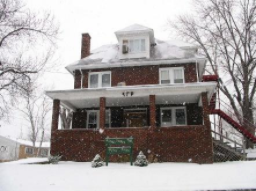
Early Alpha Alpha’s
Arthur Gail Snyder #1
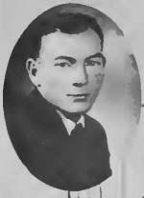 Quote: “If honesty is a fault, he’ll never find forgiveness”
Quote: “If honesty is a fault, he’ll never find forgiveness”
From: Sabraton, WV
Involvements: A.G.R. Club, Alpha Gamma Rho, Grange (Worthy Master), Press Club, Block and Bridle, Alpha Zeta, Rifle Team, Dairy Judging Team, Livestock Judging Team, Managing Editor West Virginia Agriculturalist, Pres. Agriculture Club, Pres. Agriculture Council
Arthur Lynn Core #2
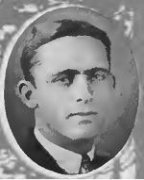 Quote: “Nothing distresses me”
Quote: “Nothing distresses me”
From: Core, WV
Involvements: A.G.R. Club, Alpha Gamma Rho, Block and Bridle, Stock Judging Team, Dairy Judging Team, Basketball Squad
Dr. Earl Lemley Core #30
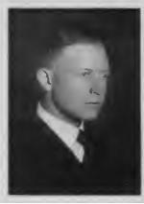 Quote: “He goes to the core of the question of progress – the land”
Quote: “He goes to the core of the question of progress – the land”
From: Core, WV
(1902-1984) was a botanist and botanical educator, researcher and author as well as a local West Virginia historian. He was founder (1936) of the Southern Appalachian Botanical Club and editor of its journal, Castanea, for thirty-five years. He was a teacher and professor at West Virginia University (WVU) for over 44 years (1928-72). During the 2nd World War from 1943 to 1945 he explored in the Andes Mountains in search of wartime sources of quinine from theCinchona tree. He served for four years on the Morgantown City Council and was Mayor of the City of Morgantown for two years. The Earl L. Core Arboretum at WVU is named in his honor. Co-author of Flora of West Virginia, the most definitive writings of flora and flauna in West Virginia.tive writings of flora and flauna in West Virginia.
